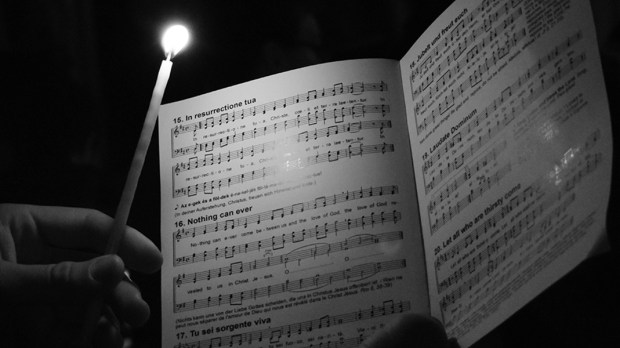While it has been around for decades, there are still many who have never heard of the richly introspective Taizé style of prayer. A form of chant developed in the 20th century by French monastics, Taizé is a term that defines the style of music as well as the accompanying church services during which they are performed. That makes it hard to describe without experiencing first hand.
Named for the ecumenical monastic community in which it was created, Taizé (pronounced Tay-Zay) music is simple in its construction, focusing on short bits of text — usually drawn from scripture — sung in repetition to promote meditation on the chosen biblical exerpt. In practice, the texts are sourced from many different languages, creating all-inclusive worship services in which intermittent periods of contemplative silence are just as important as the sustained chants. The variety of languages also acts as a nod to the Taizé monastic community, which includes more than 100 brothers from over 30 countries.
http://youtube.com/watch?v=t4Svh-9ohg4
In this example of a Taizé-style chant, we can hear the repetitious chorus line, which continues uninterrupted for the entirety of the piece. The style often employs soloists to come in with a subtle highlight to the melody, which in this case can be heard coming from an oboe, guitar, and solo vocals.
The essence of the Taizé style was perfectly described by CJ Capen, music minister of St. John Neumann Church in Reston, in an interview with the Catholic Herald. He said:
“Prayer in the Spirit of the Taizé community is a meditative form of common prayer. Gathered in the presence of Christ, we sing uncomplicated, repetitive songs, uncluttered by too many words, allowing the mystery of God to become tangible through the beauty of the simplicity. A few words sung over and over again reinforce the meditative quality of prayer. They express a basic reality of faith that can quickly be grasped by the intellect and that gradually penetrates the whole being.”
Capen went on to extol the spiritual value of the Taizé style, suggesting that the repetition allows a reexamination of memorized prayers for a deeper understanding. He said:
“We love the prayers we’ve memorized … but it can become a habit and we’re not really praying anymore. There’s something about Taizé that just transforms you. It turns me around, from busy and stressed to feeling that connection to God.”
The style has become so popular that a choir was formed to perform some Taizé chant during the world pandemic’s time of isolation:
There is no shortage of great Taizé recordings on Youtube.
in a variety of languages.
